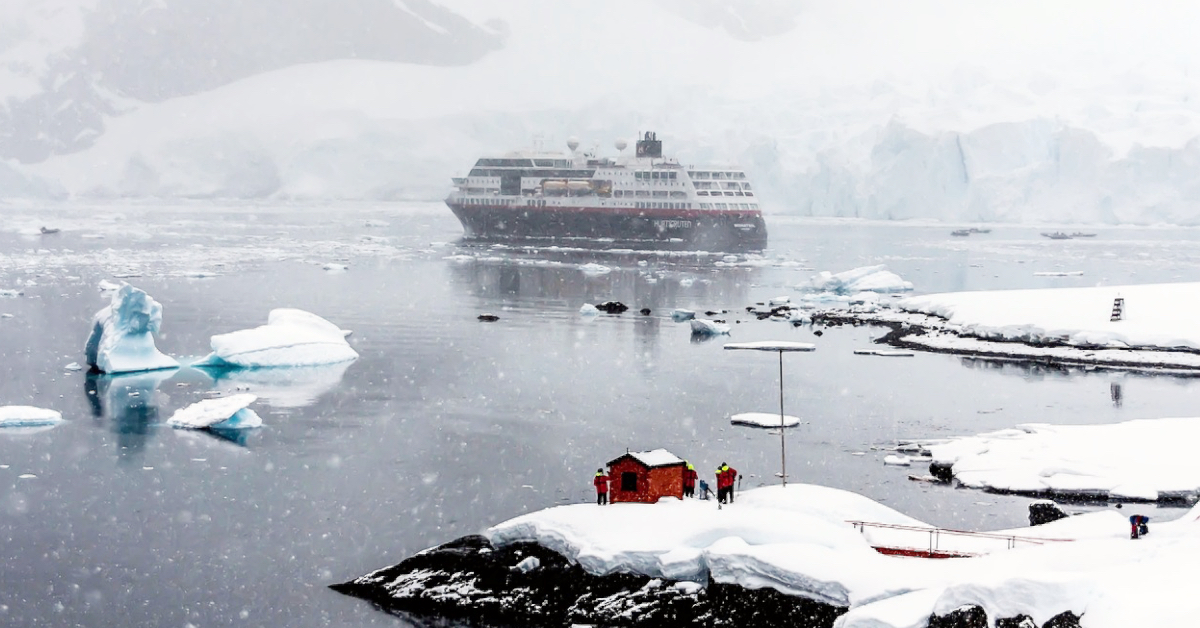UH project focuses on navigating the new Arctic

Climate change is causing the Arctic sea ice to thin, making more Arctic waters accessible to shipping and transportation, research and exploration, and other economic development activities. Increased maritime activities in the region pose potential risks to the pristine Arctic environment, especially in areas used by fishing vessels, offshore oil and gas industry and cruise liners.
The National Science Foundation recently granted nearly $800,000 in funding to University of Hawai‘i at Mānoa researchers to develop a state-of-the-art mathematical model to predict interactions between sea ice and ships or industrial structures. Additionally, the research team will create a risk assessment system for shipping and other operations in the Arctic.
“The interaction between the built and natural environment shapes social and economic realities in the Arctic in observable ways,” said Deniz Gedikli, lead investigator on the new grant and assistant professor of Ocean and Resources Engineering at the UH Mānoa School of Ocean and Earth Science and Technology (SOEST). “We anticipate that, in the end, the knowledge acquired through the project will benefit a wide range of stakeholders, such as residents, businesses, local, regional, and government agencies, and academia who are invested in the both natural and social well-being of the region to enable resilient and sustainable Arctic communities.”
In the Arctic, the major barrier deterring the understanding of the physical environment is that all the components of the Arctic system interact with each other in a complex, evolving pattern. Further, marine structures operating in icy areas of the region also cause changes in the Arctic icescape. Therefore, the researchers include three important aspects in this project—the built environment, natural environment and social systems.
Gedikli and Oceana Francis, co-investigator and Civil and Environmental Engineering and Hawai‘i Sea Grant College Program associate professor, will use a combination of data from field experiments, models, satellites and observations to explore complex interactions between ice and marine structures in the Arctic to provide safe shipping and operations in the region.
The developed model will be used to form a novel risk assessment concept which will help ship operators and people working on other man-made structures to make informed decisions during operations in the Arctic.
In addition to several graduate students and postdoctoral researchers who will work on this project, the team will hire undergraduate students during the summer months to help increase the climate change awareness among young investigators across the globe and in Hawai‘i.
Collaborations facilitate progress
Francis has a long history working on Arctic-related projects and spent 16 years in Alaska, working in both industry and academia and completing her doctoral degree at the University of Alaska. Gedikli had a postdoctoral research position in Norway where he been working on Arctic engineering-related projects. Realizing the potential for synergy between their lab groups, the two researchers will combine their expertise for the upcoming efforts.
Through this project, the UH team will initiate an international collaboration with Hayo Hendrikse from Delft University of Technology (Netherlands). Hendrikse will use his newly developed ice-structure interaction model to cross-validate the certain aspects of the proposed framework.
To further assess their risk assessment model, Gedikli and Francis will also collaborate with two large fishing companies from Alaska, which kindly agreed to test the proposed framework.



